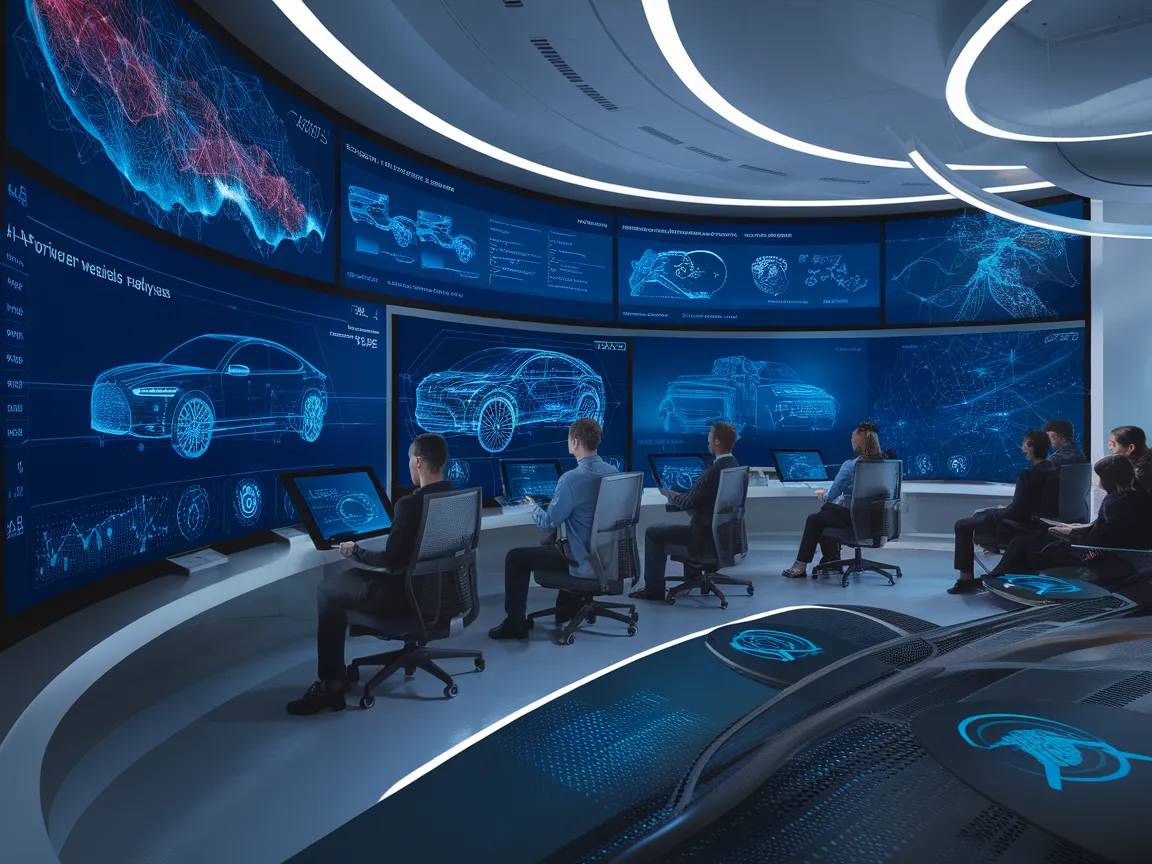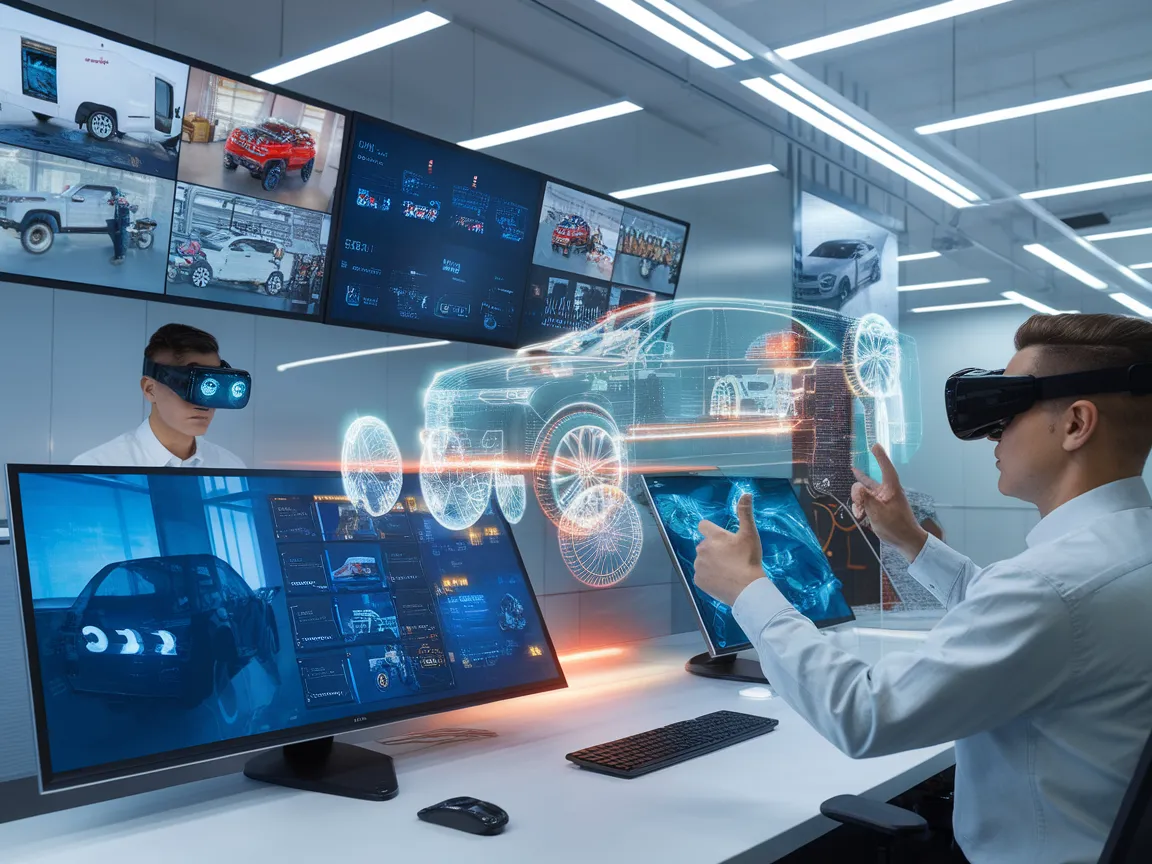When it comes to vehicle servicing, technical diagnostics demand technical skill and precision to properly identify car malfunctions. Start with OBD-II scanners to extract error codes for real-time analysis. These diagnostic indicators guide technicians potential issues, while implementing a methodical Eight-Step Diagnostic Process guarantees comprehensive analysis. Verify diagnostic data with OEM guidelines and thoroughly log every procedure. Pre-repair and post-repair scans are vital for ensuring proper fixes and safety requirements. Incorporating Technical Service Bulletins (TSBs) enhances service operations with current OEM information. When you preserve comprehensive records and transparent client updates, you'll be well prepared for implementing extensive diagnostic solutions. Explore approaches to optimize these processes.
Core Insights
- Modern diagnostics utilize OBD-II scanners to detect and evaluate automotive problems through diagnostic fault codes.
- The 8-Step Diagnostic Methodology guarantees structured and complete problem identification and resolution.
- Before and after diagnostic procedures validate component performance and optimize maintenance precision and reporting.
- Manufacturer bulletins deliver factory-specified solutions for addressing targeted vehicle concerns.
- Routine software maintenance manage protection requirements and enhance ADAS features.
Exploring Modern Vehicle Diagnostics
Regarding grasping modern vehicle diagnostics, it's vital to understand the sophisticated integration of cutting-edge tech and traditional inspection methods that shape the process.

You'll discover that the core of diagnostics centers on advanced tools like OBD-II scanners. These devices connect directly with your vehicle's onboard computer systems, delivering live system analysis, component testing capabilities, and also module programming functionality. They differ from basic code readers to advanced diagnostic equipment designed for detailed analysis.
Understanding Diagnostic Trouble Codes (DTCs) plays a vital role. Each DTC offers specific insights about your vehicle's issues. The first character indicates the affected system, such as the Body or Powertrain. The second digit tells you if the code is universal or brand-specific, while the remaining digits pinpoint the specific issue and area.
Always consider the importance of visual inspection, which supports electronic diagnostics. Inspecting for visible issues, fluid conditions, and component wear can validate electronic findings and identify additional issues.
This integration guarantees a comprehensive diagnostic approach, allowing you to pinpoint problems accurately and efficiently. By integrating these approaches and systems, you fully utilize the entire scope of modern vehicle diagnostics to achieve ideal vehicle performance.
Professional Diagnostic Protocols and Recommended Practices
To efficiently navigate the intricacies of vehicle diagnostics, you'll want to adhere to the Eight-Step Diagnostic Process, conducting complete pre-scan and post-scan protocols.
Integrate Technical Service Bulletins (TSBs) to retrieve manufacturer-specific fixes, while meticulous documentation and record keeping streamline future reference.
Establish clear customer communication to establish realistic expectations and deliver transparent updates on service status.
The Eight-Step Diagnostic Approach
Implementing the systematic diagnostic approach guarantees a methodical and accurate approach to automotive repairs.
First, verify the problem by interviewing the customer and recording particular issues, operating conditions, and whether the issue occurs with a warm or cold engine. A visual inspection proceeds, where you evaluate systems, past service work, and check essential systems and fluid levels.
Next, link scanning tools to obtain fault codes, examining patterns and frequencies for insights. Don't overlook manufacturer updates; they contain crucial details on common problems, safety notices, and technical updates.
Review diagnostic information by monitoring real-time streams and comparing them against manufacturer specifications, detecting any abnormal parameters. This analysis enables you to narrow down the problem, isolating it to a specific system and pinpointing faulty elements.
Execute repairs, complying with manufacturer guidelines. It's crucial to address the source problem, not just the symptom, making sure you repair components as needed.
In conclusion, confirm the repair by evaluating the vehicle, looking for new issues, removing codes, and verifying all systems are operational.
Document every step, from initial symptoms to end results, and maintain clear interaction with the customer throughout the diagnostic journey.
The Critical Role of Pre and Post Scanning
Grasping the significance of pre-scan and post-scan procedures in modern vehicle repair is vital for preserving both safety and repair standards. A pre-scan analysis acts as your initial line of defense, evaluating electronic systems to identify current concerns, fault codes, and hidden damage that cannot be visible during a visual inspection. This comprehensive assessment enables you to pinpoint safety system issues and interconnected component issues, providing a guide for efficient repairs.
Once the repair work is completed, a post-scan verification is important. It ensures that all systems are operating correctly and validates that no new issues have emerged. This procedure not only verify the success of the repair; it logs system functionality and confirms proper calibration, providing a clear indication of repair completion.
Including these scans into your workflow enhances safety assurance by verifying that all electronic systems, vital for modern vehicle operation, are working as intended. It also expedites insurance claims management, offering faster clearance and more accurate repair estimates.
Technical Service Bulletin (TSB) Integration
In the field of automotive repair, integrating Technical Service Bulletins (TSBs) as part of your diagnostic workflow is an essential step towards precise and effective issue resolution. TSBs function as essential guides, offering manufacturer-issued instructions for addressing non-safety-related vehicle issues influencing performance and customer satisfaction.
Start by conducting a thorough review of relevant TSBs before commencing diagnostic work. This assures you have access to manufacturer-specific information regarding frequent concerns.
Implementing contemporary diagnostic systems, which seamlessly incorporate TSBs, enhances your diagnostic workflow. Once you obtain diagnostic trouble codes, these platforms provide immediate access to applicable bulletins, eliminating guesswork.
Be sure to follow precisely to the manufacturer-recommended repair procedures detailed in the TSBs. This accuracy assures that repairs meet the highest standards and foster consistent quality.
You'll find that integrating TSBs reduces your diagnostic time significantly, as they offer consistent repair methods and necessary parts and tools. This doesn't just enhances technician productivity but also increases overall customer satisfaction.
Maintenance Documentation
Proper documentation and record-keeping in vehicle servicing is vital in maintaining high standards and maintaining legal compliance. First, you should carefully document automotive data comprising the vehicle identification number, manufacturer, model, and odometer reading.
Record vehicle and owner information to build a thorough profile. During maintenance, log every diagnostic test performed, along with diagnostic findings and error codes.
Record in detail components serviced or replaced and service procedures completed. It's crucial to record the time of important steps to monitor the maintenance schedule correctly.
Deploy electronic record-keeping platforms with dedicated repair order software to streamline record-keeping. Electronic inspection sheets and electronic storage for testing results improve workflow and data protection.
Always maintain backup systems to protect against data loss. For legal compliance, keep complete repair histories for no less than 15 months, including service approvals and rejected recommendations.
Electronic and paper records could be needed, depending on regulations.
Guidelines for Customer Communication
When handling the nuances of customer communication in automotive service diagnosis, establish a thorough protocol to maintain clarity and precision.
Begin with the primary interaction: engage in attentive listening and keep eye contact while collecting comprehensive data about the vehicle's issues. Explain diagnostics in clear, everyday language to guarantee customers grasp the process and remain updated.
Documentation is crucial. Create comprehensive records of car problems, distinguish between necessary and recommended repairs, and present itemized estimates encompassing parts, labor, and timelines.
Obtain written approval for all repairs and thoroughly document customer decisions, including insurance approvals.
Translate complex technical specifications into everyday terms, eliminating jargon and acronyms. This establishes trust and helps customers in making educated decisions.
Leverage digital tools by offering digital inspections, text updates, and online payments, enhancing transparency and convenience.
Keep customers informed with periodic status updates, immediate notifications of new issues, and precise timelines.
Establish quality assurance through systematic inspections and final checks before delivery.
After service, provide comprehensive documentation of repairs, future maintenance recommendations, and warranty information.
Collect feedback through questionnaires and follow-up communications to refine services. Consistent communication promotes satisfaction and loyalty, leading to long-term success.
Advanced Vehicle Diagnostic Solutions
Redefining our approach to vehicle maintenance, advanced diagnostic technologies are reshaping the field of auto repairs. Welcome the future with artificial intelligence-driven systems that cut diagnostic time by up to 90%. By employing predictive maintenance algorithms, you can predict potential failures through thorough sensor data analysis.
AI-driven visual recognition systems facilitate precise damage assessment, while ML algorithms analyze extensive vehicle data for exact diagnostics. Cloud-based diagnostic systems offer centralized data management across entire fleets. This technology enables automated troubleshooting and instant anomaly detection, enhancing vehicle performance and decreasing downtime.
Remote diagnostics empower you to evaluate vehicle health without physical inspection, delivering live ECU data access, quick fault detection, and proactive maintenance, all while enhancing customer support through remote assistance. Vehicle connectivity and continuous monitoring track vehicle performance.
These systems constantly monitor health metrics, improve maintenance schedules, and assess driver behavior using GPS-powered tracking. However, difficulties remain, such as managing underdiagnosis with too aggressive approaches and the challenge of error accuracy. As you implement these advancements, you're going beyond problem-solving—you're leading automotive excellence.

ADAS & Current Vehicle Technologies
For vehicles featuring ADAS systems, technicians need to complete both static and dynamic calibration for ensuring precise system diagnostics for cameras and radar units.
Keep track of most recent programming and software updates to maintain precision of vehicle safety features and comply with warranty requirements.
Detailed recording of calibration steps remains critical for warranty compliance and reliable verification of safety systems.
Dynamic vs Static Calibration Methods
A key component of driver assistance systems is maintaining precise calibration, which is performed through two main methods.
Static calibration takes place with the vehicle immobile, usually in a controlled setting like a workshop. The process demands a level surface, regulated lighting, and professional calibration instruments. This method offers high precision, but it requires a specialized facility and is often time-consuming. It's more rigid and involves greater facility costs but guarantees reliable outcomes, unaffected by weather.
On the other hand, dynamic calibration, also known as mobile calibration, is performed while the vehicle is being driven. This method requires clear weather, visible road markings, and specific driving speeds. This method offers its flexibility, as it evaluates the system in real-world conditions and needs less specific hardware. However, it relies significantly on weather and road conditions, and the results can vary.
Choosing between these methods hinges on specific vehicle needs, OEM guidelines, and your facility's capabilities. Often, both calibrations are required to ensure ideal ADAS performance, especially after services like windscreen changes or alignment services.
Each approach requires professional expertise and must be approached with precision to maintain system integrity.
ADAS Camera and Radar Diagnostics
Today's ADAS-equipped vehicles need careful diagnostic procedures for sensing systems to guarantee flawless operation.
Begin with a visual inspection of sensors for obstructions and physical damage. You must check for system error codes which could reveal component issues or positioning problems. Confirm sensor positioning following factory guidelines.
Vision systems are essential for identifying road elements and markings, though they have constraints. Adverse weather conditions could affect functionality, and compromised visibility conditions may affect performance. Mitigate these problems using regular cleaning and maintenance.
Radar systems utilize RF technology in measure distance and velocity. They maintain effectiveness in adverse conditions, but may experience disruption from external factors. Pay special attention to calibration drift issues.
To ensure accurate assessment, implement multiple calibration procedures with specialized equipment. Road testing confirms proper system response in real-world conditions.
Make certain to have OEM-specific certification and use appropriate diagnostic tools. Regular maintenance including alignment verification and system cleaning remains crucial to ensure sustained performance.
Software Updates and Programming
As the automotive industry continues to advance, keeping your vehicle's software up-to-date is essential for maintaining optimal performance, especially for ADAS systems. Modern vehicles are complex entities equipped with over 100 million lines of code, making software updates and programming vital for optimal operation. Software updates address security vulnerabilities, provide feature enhancements, and optimize ADAS functionalities.
You must handle these updates through secure protocols using encryption, maintaining compatibility across electronic control units. Remote updates optimize this process, allowing seamless integration of system improvements and security updates without requiring a visit to the service center. Verification and authentication protocols are essential to guarantee that updates are valid and compatible with your vehicle's systems.
The software architecture includes core stacks like software driven by timing for critical operations and user interaction software based on events. Comprehending integration points, such as middleware elements and hardware abstraction interfaces, is crucial for effective system diagnostics.
Real-time monitoring and error code identification improve diagnostic capabilities, while system optimization and calibration control are crucial for preserving ADAS efficiency.
Safety Systems Assessment
Modern vehicles rely heavily on software to function efficiently, and maintaining system updates is just one part of the equation. You need to prioritize assessing the safety systems within ADAS and current vehicular frameworks to maintain maximum efficiency.
ADAS combines powerful processors, sensor arrays, and actuators to enhance driving safety. Its core components include positioning systems, object perception, and control mechanisms designed to prevent collisions by decreasing human errors.
To validate these systems, start with requirements-based testing. Define safety goals, verify functionality, and make sure everything's documented.
Next, employ scenario-based testing, modeling real-world traffic scenarios and environmental conditions to assess system responses.
For hardware, implement Hardware-in-the-Loop (HIL) testing, integrating real components to validate sensors and controllers. Augment this with digital testing environments, replicating real-world conditions for a thorough pre-deployment check.
Proactive safety mechanisms like automated braking systems and dynamic cruise systems require scrupulous validation.
Pay attention to passive safety features, such as alerts and notifications, making certain they're consistent and efficient.
Warranty Implications and Documentation
The effectiveness of warranty protection for ADAS-enabled vehicles depends heavily on detailed documentation. It's essential to verify that each ADAS component maintenance work is properly documented. Service records need to specify performed calibrations, component updates, and diagnostic procedures. Pre and post-repair diagnostic scans are vital, establishing your vehicle's status before and after repairs.
Due to ADAS integration with critical vehicle systems like critical driving components, every service procedure require careful consideration of these relationships. Detailed calibration records is critical, as even minor repairs can impact ADAS performance, necessitating precise calibration.
Technical expertise constitute another crucial factor. Ensure that the service facility keeps track of technical training specific to ADAS technologies. Following manufacturer guidelines and using authorized equipment remains vital for maintaining warranty coverage.
For service validation, document system performance through digital diagnostic checks and, when appropriate, controlled test drives. Document initial issues, diagnostic results, repair authorizations, and post-repair validation.
Keep both digital and physical copies of every record to serve as legal proof, protecting against potential liability issues and maintaining thorough warranty administration.
Emerging Developments in Automotive Diagnostics
The landscape of vehicle diagnostics is definitively changing with innovative technologies that address the complicated issues of maintaining modern vehicles. Smart diagnostic systems takes center stage, offering real-time monitoring systems for parts performance and sophisticated analysis that identify issues prior to failure. These technologies support automated diagnostic processes, ensuring proactive upkeep becomes both efficient and effective.
Online systems are advancing remote diagnostics, enabling centralized data management. This enables comprehensive vehicle tracking and analysis, optimizing maintenance schedules across multiple vehicles.
Concerning electric vehicles, specific diagnostic tools are required. Battery health monitoring, including charging performance monitoring and thermal management, is crucial to maintaining EV performance.
Integrated diagnostic systems additionally improve real-time vehicle health monitoring through connected systems, offering remote system upgrades and smooth information transfer.
Machine learning applications, including systematic error identification and natural language processing, provide intelligent diagnostic recommendations, forecasting failures with precision.
Emerging technologies like augmented reality offer interactive repair guides and instant guidance. Advanced sensors upgrade data collection capabilities, developing a preventive maintenance environment.
These innovations ensure vehicles stay operational, reducing service costs and vehicle downtime.
Key Diagnostic Equipment
Getting familiar with crucial diagnostic equipment is crucial for those engaged in modern vehicle servicing. It's important to get comfortable using OBD-II scanners and code readers, as these tools are the foundation of diagnostic procedures.
High-end scanners like various top-tier diagnostic tools deliver thorough diagnostics and real-time monitoring. When cost is a consideration, basic code readers like the Foxwell NT201 or the Motopower MP69033 deliver fundamental diagnostic features.
Take diagnostics further with digital oscilloscopes and multimeters, which are indispensable for analyzing electronic signals. Choose tools with bandwidth up to 100MHz, multiple channels, and data logging features. Included waveform generators help system diagnostics efficiently.
Don't overlook specialized manufacturer software. Programs like professional diagnostic software allow for multi-manufacturer diagnostics, necessary for modern vehicles. Furthermore, precision calibration tools from industry-leading manufacturers provide reliability in your diagnostics.
Update your diagnostic tools consistently. Regular updates increase vehicle coverage, address software issues, and improve diagnostic features.
This systematic approach, utilizing cutting-edge tools and precise diagnostics, will streamline repairs and facilitate effective vehicle maintenance.
Career Growth and Skill Enhancement
Within today's evolving automotive industry, remaining competitive means pursuing continuous professional development and training. The industry's demands are clear: to stay current with advancing vehicle technologies, you must undertake ongoing education and skills enhancement. ASE certification establishes a standard, requiring recertification every five years through rigorous testing and documented experience.
Focus on core areas like motor systems, transmission systems, and complex electrical systems to enhance your expertise.
Developing your technical proficiency involves perfecting diagnostic evaluation, diagnostic procedures, and safe use of modern diagnostic equipment. Brand-specific training programs are invaluable, offering classroom instruction, online courses, and field experience, all designed read the article for particular vehicle brands.
Prerequisites for these programs typically demand a high school diploma, formal automotive education, and a active copyright.
Utilize online resources such as digital training tools and the ASE E-Learning Portal for convenient learning options. Review technical documentation through platforms like MOTOR and ALLDATAdiy to stay informed on OEM repair procedures.
Professional credentials are means of professional growth, with specialized certifications like Master Technician status highlighting your comprehensive knowledge in automotive diagnostics and repairs.
Quality Management and Validation
The significance of quality control in automotive repairs is fundamental, as it guarantees that all automobiles exits the service center in optimal condition.
After-service validation initiates with a thorough visual inspection to confirm that repair areas fit perfectly and everything is properly fastened. It's necessary to conduct operational checks, comprising performance verification and vehicle operation checks, to confirm work completion. Employing diagnostic tools is vital for validating operations.
Safety verification remains paramount; a complete multi-point safety inspection confirms all systems comply with manufacturer requirements.
Proper documentation underlies quality assurance. Digital Vehicle Inspection Reports should feature thorough evidence of repairs, use color-coded concern ranking, and include detailed technician notes. Record all components, processes, and diagnostic results to maintain a clear service history.
Client communication significantly impacts satisfaction. Thoroughly review repair procedures, implementing visual aids and providing preventive maintenance guidance. Walk through documentation, clarify warranty coverage, and address any concerns.
Guarantee adherence demands complying with manufacturer procedures and using approved materials to maintain coverage.
Implement follow-up protocols with verification protocols, collect feedback, and preserve detailed records to optimize service reliability and client contentment.
Frequently Asked Questions
How Can I Find a Reliable Auto Service Center in My Area?
Start by investigating online reviews and ratings. Utilize platforms like popular review sites. Confirm credentials including ASE. Request recommendations from reliable contacts. Ensure they offer troubleshooting services. Check warranty policies and service guarantees for reliability.
Exploring the Expenses Related to Automotive System Analysis
For automotive diagnostic services, you'll face various costs including service costs, diagnostic tool fees, and software fees. Standard system checks typically range from $50 to $150, however complicated problems could mean additional charges. You should ask your mechanic to break down all costs, ensuring alignment with standard automotive diagnostic procedures.
When Should I Schedule a Diagnostic Scan on My Vehicle?
It's recommended to conduct vehicle diagnostics every six months to maintain optimal performance. Regularly check engine codes, sensor outputs, and system calibrations. This maintenance practice identifies emerging issues, facilitating prompt maintenance, lowering the probability of malfunctions, and maximizing vehicular efficiency.
Is It Possible to Perform Basic Vehicle Checks Without Professional Tools?
Absolutely, you're able to perform basic diagnostic checks without professional assistance. Connect an OBD2 reader for reading fault codes. Monitor your battery's condition with a multimeter. Examine vehicle fluids by yourself. These methods can reveal potential issues without professional tools.
Are Diagnostic Tests Covered In Insurance and Warranty Plans?
You need to check your coverage details for both warranty and insurance. Warranty coverage might include diagnostic procedures when connected with necessary repairs, but insurance generally won't include diagnostics unless directly related to an insured event or claim.
Key Takeaways
You've delved into the nuances of modern vehicle diagnostics, uncovering the significance of expert methodologies and cutting-edge technologies. By understanding ADAS and developing vehicle systems, you're ready to address future diagnostic challenges. Utilize advanced tools and maintain refining your skills through professional development. Prioritize quality control and verification to guarantee precise outcomes. As the automotive landscape progresses, your dedication to mastering diagnostic techniques will empower you to resolve challenges competently and preserve vehicle integrity.
Connected resources: https://en.wikipedia.org/wiki/On-board_diagnostics
 Kel Mitchell Then & Now!
Kel Mitchell Then & Now! Jenna Jameson Then & Now!
Jenna Jameson Then & Now! Ashley Johnson Then & Now!
Ashley Johnson Then & Now! Atticus Shaffer Then & Now!
Atticus Shaffer Then & Now! Jaclyn Smith Then & Now!
Jaclyn Smith Then & Now!